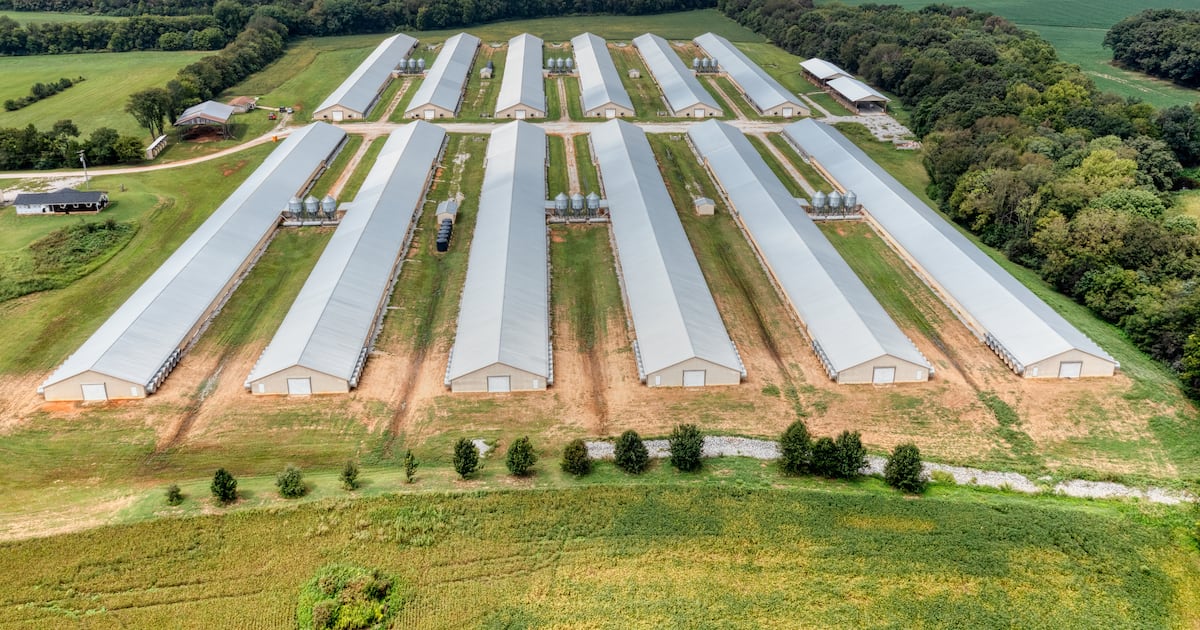Cobb-Vantress has made huge strides to position itself at the forefront of genetic improvement and poultry product development. The US company has been investing heavily in infrastructure expansion coupled with a dynamic open-innovation approach designed to fast-track breakthroughs across global markets.
Speaking to AgTechNavigator in Dallas, during the Animal AgTech Innovation Summit, William Herring, vice president of R&D at Cobb-Vantress, revealed the scale and scope of the company’s transformation since 2022. “The biggest limitation in new product development was the lack of infrastructure to generate robust, commercially relevant data,” he said. “That’s what we’ve changed.”
The company restructured both its physical and intellectual capital to accelerate the pace of development, commented Herring. These changes allow Cobb to bring new products to market faster, with greater confidence in their performance, he added.
Flagship testing facility
Key to Cobb’s strategy is a newly developed, large-scale facility where the company can simultaneously evaluate 1,000 broiler females, spanning the full production cycle.
“We’ve replicated the full pyramid of poultry production – from great-grandparents to grandparents, parent stock, broilers, and through to further processing. This comprehensive structure is designed to generate high-confidence data across every stage of the production cycle.”
This setup allows side-by-side comparison of genetic lines under real-world conditions and enables high-throughput evaluation of around 100,000 broiler eggs per week with prospective customers.
“It’s a capability that simply didn’t exist in the industry before,” Herring noted.
The company also has dedicated grow-out farms and a processing plant in Fayetteville, Arkansas, operated in partnership with the University of Arkansas. A night shift ensures continuous digital data collection and near-instant analysis.
Tyson Foods, being Cobb’s parent company, allows it to evaluate meat quality and product performance at scale. Tyson’s advanced food science capabilities – covering myopathy detection, and sensory testing – are leveraged for every major Cobb trial. “If we require additional analysis from a bench chemistry standpoint, we collaborate with them to carry it out.”
All those assets give Cobb the flexibility and scalability to be competitive across every major market segment, Herring said.
From developing lines optimized for white meat yield and heavier carcass weights, the company is tailoring its offerings to shifting global demands.
Global innovation network
In tandem with facility expansion, Cobb launched the Cobb Research Initiative (CRI) in early 2023 to tap into global academic and scientific expertise.
“We took a broad approach in soliciting proposals, focusing on topics that were meaningful from a genetic improvement standpoint. Our goal wasn’t to limit the scope to trait-specific issues, but rather to identify research that could ultimately deliver tangible benefits to our customers and potential partners alike.”
The program has received increasing interest each year, with 46 pre-proposals submitted in its third call.
CRI projects typically run two to three years and cover fields like precision phenotyping, AI-driven data analytics, and novel genomic approaches – disciplines where Cobb sees strategic potential but may lack in-house capabilities.
“Even though we’re a sizable organization, we can’t conduct every critical research project internally,” Herring explained.
CRI is about building a research network that supports Cobb’s customers and future products, he added.
Three strategic pillars for the future
Cobb’s long-term vision is underpinned by three strategic priorities:
Aggressive new product development – Customizing genetic packages for specific markets and regions, particularly where market demands differ (e.g., white meat yield in North America vs. cost-efficient performance in other regions).
Ongoing genetic improvements – Leveraging genomic selection, precision data collection, and improved prediction models to stay ahead in broiler performance.
Technology-driven research engagement – Partnering externally and investing internally in transformational technologies that can reshape poultry production, including host-pathogen interaction for more disease resistant birds, and food safety innovations.
